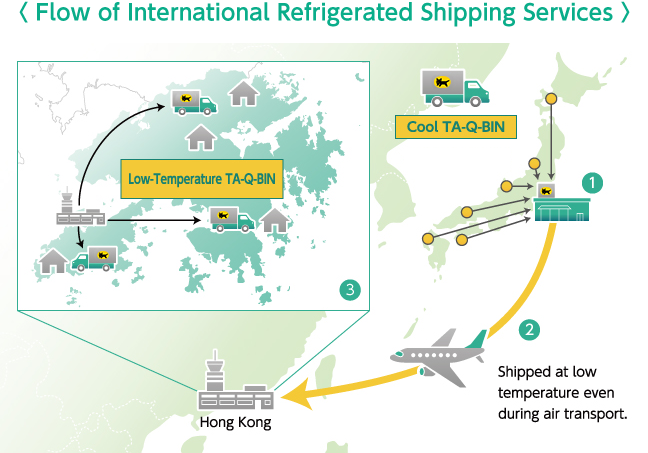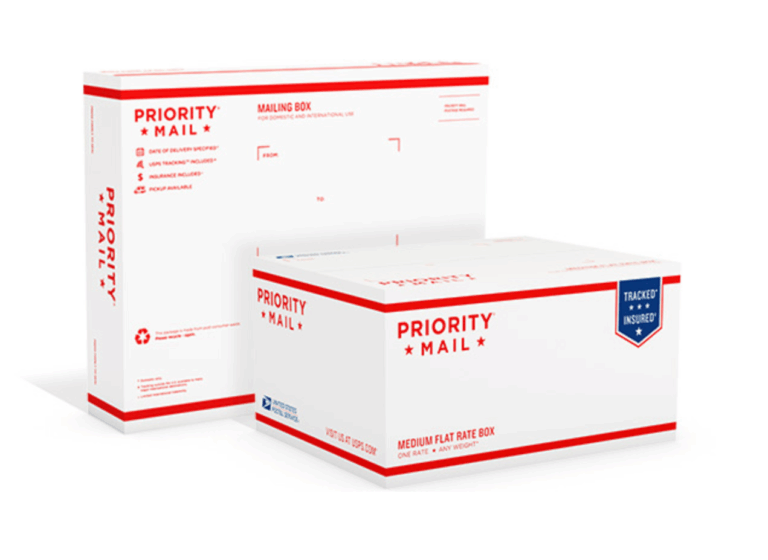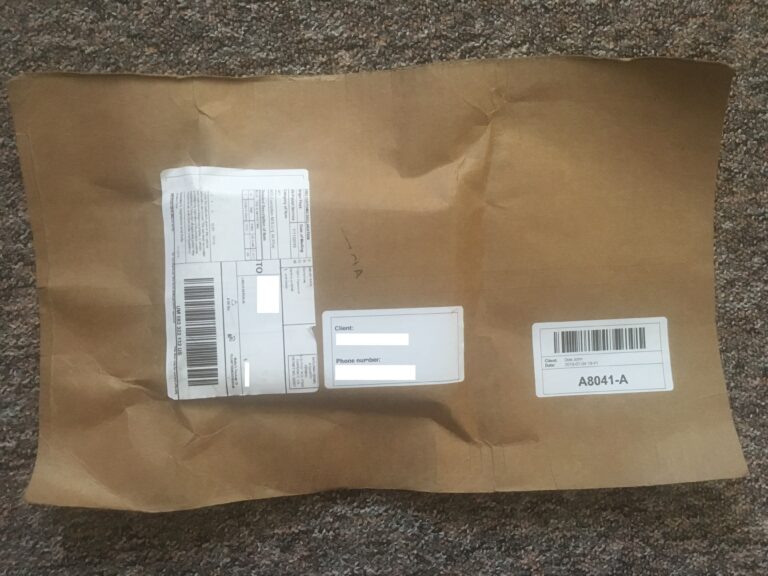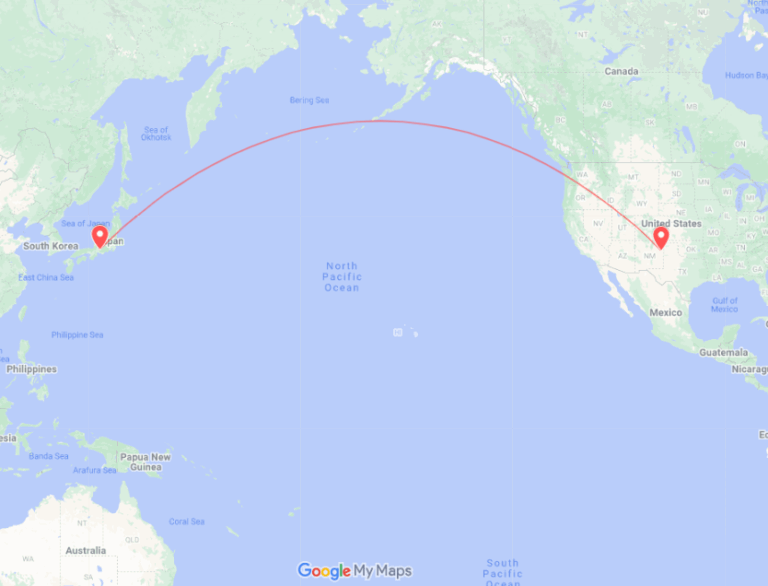How to Ship ‘Shipping From Japan’: Costs, Times & Process
Your Complete Guide to shipping from japan
Navigating the Complexities of Shipping from Japan
Shipping from Japan presents a unique set of challenges for international shippers, importers, exporters, and business owners. With Japan’s intricate logistics network and a multitude of shipping options available, understanding how to effectively navigate this landscape can be overwhelming. Businesses, especially those located in regions such as Brazil, Germany, and the UAE, often struggle to determine the best shipping methods, manage costs, and comply with customs regulations. This guide aims to demystify the shipping process from Japan, equipping you with the knowledge needed to streamline your operations and enhance your supply chain efficiency.
In this comprehensive guide, we will cover several key areas critical to successful shipping from Japan:
-
Shipping Methods: We will explore various shipping options available for international parcels, including Airmail, Economy Air (SAL), Surface Mail, and specialized services like International TA-Q-BIN. Each method comes with its own advantages and limitations, and understanding these can help you select the most suitable option based on your business needs.
-
Cost Considerations: Shipping costs can vary significantly based on weight, dimensions, destination, and chosen shipping method. We will break down the pricing structures for different services and provide tips on how to minimize expenses while maintaining quality and reliability.
-
Transit Times: Knowing the expected delivery times for different shipping methods is crucial for planning and customer satisfaction. We will provide estimates for transit times, helping you set realistic expectations for your clients.
-
Customs Regulations: International shipping is often complicated by customs clearance processes. We will guide you through the necessary documentation, duties, and taxes that may apply when shipping goods from Japan to your destination, ensuring compliance and minimizing delays.
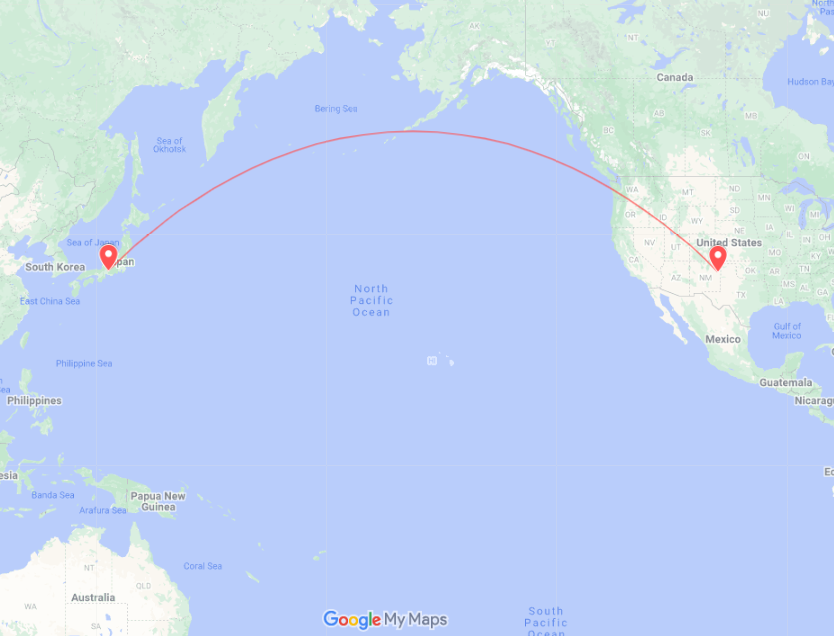
-
Risk Management: Shipping inherently carries risks such as loss, damage, or delays. We will discuss insurance options available for your shipments and best practices for packaging and labeling to mitigate these risks.
By the end of this guide, you will possess the expert knowledge required to navigate the complexities of shipping from Japan efficiently. Whether you’re looking to import unique goods for your retail business or export products to the Japanese market, our insights will empower you to make informed decisions and optimize your shipping strategy. Prepare to enhance your logistics operations and improve your bottom line as you unlock the potential of the Japanese market.
Table of Contents
- Your Complete Guide to shipping from japan
- Understanding Your Shipping Options: A Detailed Comparison
- Deconstructing the Cost: A Full Pricing Breakdown
- Transit Time Analysis: How Long Will It Take?
- Navigating Customs Clearance: A Step-by-Step Guide
- A Practical Guide to Choosing Your Freight Forwarder
- Incoterms 2020 Explained for Shippers
- Risk Management: Identifying and Mitigating Common Shipping Problems
- Frequently Asked Questions (FAQs) for shipping from japan
- Conclusion: Key Takeaways for Successful Shipping
- Important Disclaimer
Understanding Your Shipping Options: A Detailed Comparison
Overview of Shipping Methods from Japan
When it comes to international shipping from Japan, businesses have a variety of options to choose from. Each method has unique characteristics that cater to different shipping needs, whether it be speed, cost, or the type of goods being transported. Below is a detailed comparison of the most common shipping methods: Sea Freight (Full Container Load – FCL and Less than Container Load – LCL), Air Freight, Rail, Express services, and specialized options.
| Shipping Method | Best For | Speed | Cost Level | Key Advantages | Key Disadvantages |
|---|---|---|---|---|---|
| Sea FCL | Large shipments | 20-40 days | Low | Cost-effective for bulk, predictable transit | Longer transit times, port delays possible |
| Sea LCL | Smaller shipments | 30-50 days | Moderate | Flexible, can ship smaller quantities | Higher cost per kg than FCL, slower than air |
| Air Freight | Urgent, valuable items | 1-7 days | High | Fast delivery, reliable tracking | Expensive, weight and size limitations |
| Rail | Landlocked destinations | 7-14 days | Moderate | Cost-effective for bulk, eco-friendly | Limited routes, slower than air |
| Express | Time-sensitive parcels | 1-3 days | Very High | Fastest delivery, door-to-door service | Very expensive, weight restrictions |
Sea Freight
Full Container Load (FCL)
FCL shipping involves the exclusive use of an entire shipping container. This method is most suitable for large shipments where the volume justifies the cost.
When to Use:
– When you have enough goods to fill a full container.
– For consistent shipping needs.
Pros:
– Cost-effective for large volumes.
– Reduced risk of damage as the container is sealed.
– Faster loading and unloading compared to LCL.
Cons:
– Higher upfront cost if you don’t fill the container.
– Longer transit times compared to air freight.
Less than Container Load (LCL)
LCL allows multiple shippers to share container space, making it an ideal choice for smaller shipments.
When to Use:
– When shipping volumes do not justify a full container.
– For infrequent shipments.
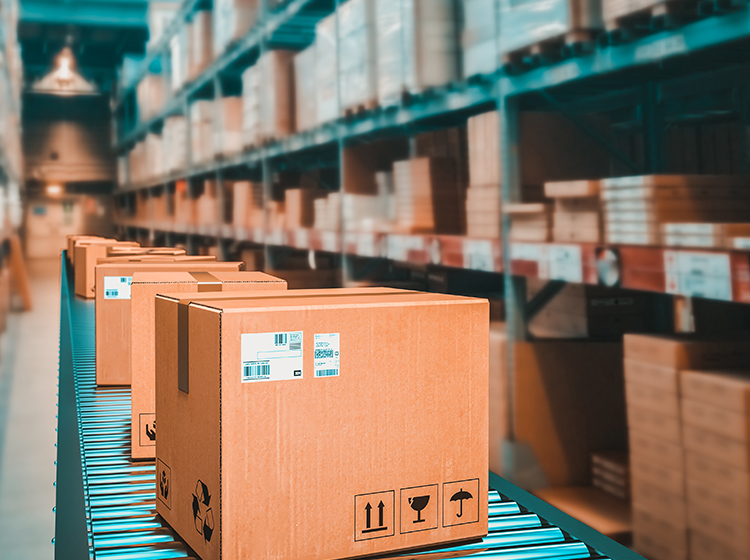
Pros:
– Flexibility in shipping smaller quantities.
– Lower initial costs compared to FCL.
Cons:
– Longer transit times due to consolidation and deconsolidation.
– Higher cost per kg compared to FCL.
Air Freight
Air freight is the quickest method for transporting goods internationally. This option is ideal for high-value or time-sensitive items.
When to Use:
– For urgent shipments, such as electronics, pharmaceuticals, or fashion items.
– When reliability and speed are critical.
Pros:
– Fast delivery, typically within 1-7 days.
– Enhanced tracking capabilities.
– Minimal risk of damage and theft.
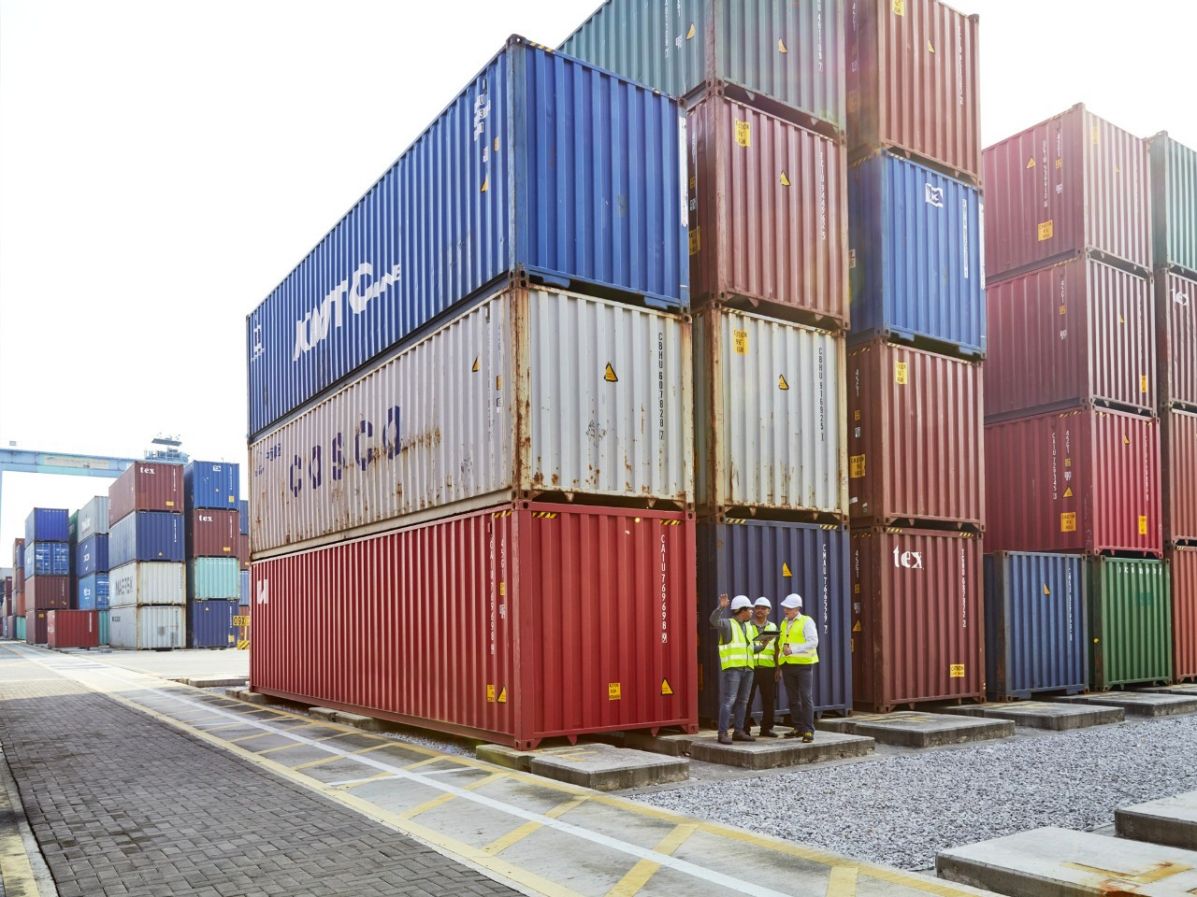
Cons:
– High cost, particularly for heavy or bulky items.
– Size and weight restrictions may apply.
Rail Freight
Rail freight is an efficient way to transport goods overland, particularly from Japan to neighboring countries.
When to Use:
– When shipping large volumes to destinations accessible by rail.
– For eco-friendly shipping options.
Pros:
– Cost-effective for bulk shipments.
– Reliable and less prone to delays compared to road transport.
Cons:
– Limited routes and destinations.
– Slower compared to air freight.
Express Services
Express shipping services are designed for urgent deliveries, offering the fastest transit times available.
When to Use:
– For time-sensitive shipments where speed is paramount.
– When door-to-door service is required.
Pros:
– Fastest option available, often within 1-3 days.
– Comprehensive tracking and customer support.
Cons:
– Extremely high costs compared to other methods.
– Weight restrictions can limit the size of shipments.
Special Considerations
Multimodal Transport
Multimodal transport combines two or more modes of transport, such as sea and rail or air and road, to optimize shipping efficiency. This approach can be particularly beneficial for businesses looking to balance cost and speed.
Key Advantages:
– Flexibility in choosing the best transport modes.
– Potential cost savings by leveraging the strengths of each method.
Key Disadvantages:
– More complex logistics management.
– Potential for longer transit times depending on the modes used.
Specialized Options
Roll-on/Roll-off (RoRo):
RoRo shipping is ideal for vehicles and large machinery that can be driven onto the vessel. This method is efficient for transporting automobiles, trucks, and heavy equipment.
Break Bulk:
Break bulk shipping is used for oversized cargo that cannot fit into standard containers. This method requires careful planning and handling, making it suitable for specific industries like construction and oil & gas.
Conclusion
Choosing the right shipping method from Japan involves evaluating your specific needs based on shipment size, urgency, and cost considerations. Understanding the characteristics and implications of each option will help international shippers, importers, exporters, and business owners make informed decisions to optimize their logistics processes. By leveraging the strengths of different shipping methods, businesses can enhance their supply chain efficiency and ensure timely delivery of goods to their customers across the globe.
Deconstructing the Cost: A Full Pricing Breakdown
Understanding the Cost of Shipping from Japan
Shipping goods internationally can be a complex process, especially when navigating the costs associated with various freight methods. For businesses importing or exporting from Japan, it’s crucial to understand the different cost components involved in shipping. This section will break down the primary cost categories, analyze detailed factors influencing pricing, provide a sample pricing table, and offer actionable tips to reduce shipping costs.
Main Cost Components
When shipping from Japan, costs can generally be categorized into three main components:
- Main Freight
- Origin Charges
- Destination Charges
Each of these components plays a significant role in determining the overall cost of shipping.
Main Freight
The main freight is the primary cost associated with transporting goods from the origin to the destination. This cost can vary greatly depending on the mode of transport selected—air, sea, or rail.
Influencing Factors:
- Mode of Transport: Air freight is typically faster but more expensive than sea freight. For example, air freight rates are often calculated per kilogram, while sea freight costs can be based on container size (e.g., 20ft or 40ft).
- Distance: The greater the distance between Japan and the destination country, the higher the freight costs.
- Cargo Type: Different types of cargo (e.g., perishable goods, hazardous materials) may incur additional charges due to special handling or regulations.
- Weight and Volume: The weight and dimensions of the shipment affect how much space it occupies in transport, influencing the cost.
Origin Charges
Origin charges are fees incurred before the shipment leaves Japan. These charges may include:
- Packaging and Handling: Costs associated with preparing goods for shipment, including packing materials and labor.
- Documentation Fees: Charges for preparing necessary shipping documents, such as bills of lading, customs declarations, and insurance paperwork.
- Pick-Up Fees: If goods need to be collected from multiple locations, additional fees may apply.
- Customs Clearance: Fees for clearing goods through Japanese customs before export.
Influencing Factors:
- Complexity of Shipment: More complex shipments requiring special handling will increase origin charges.
- Service Provider Fees: Different freight forwarders may have varying pricing structures for their services.
Destination Charges
Destination charges are costs that arise once the shipment reaches its destination country. These may include:
- Unloading Fees: Charges for unloading the shipment from the transport vehicle.
- Customs Duties and Taxes: Import taxes, tariffs, or duties based on the value of the goods being imported.
- Delivery Fees: Costs associated with transporting the goods from the port of entry to the final destination.
- Storage Fees: If the shipment is delayed at customs, storage fees may accrue.
Influencing Factors:
- Destination Country Regulations: Different countries have varying tariffs and regulations that can affect the total cost.
- Local Handling Fees: Fees set by local service providers for handling the cargo upon arrival.
Example Pricing Table
Below is a sample pricing table for shipping costs from Japan to the USA. Please note that these are estimates and actual costs may vary based on specific circumstances.
| Shipping Method | Container Size | Estimated Cost (USD) | Estimated Transit Time |
|---|---|---|---|
| Sea Freight | 20ft | $1,500 – $2,500 | 25 – 40 days |
| Sea Freight | 40ft | $2,500 – $4,000 | 25 – 40 days |
| Sea Freight | LCL (per CBM) | $150 – $250 | 30 – 50 days |
| Air Freight | Per kg | $5 – $10 | 2 – 7 days |
Disclaimer: The above prices are estimates and can fluctuate based on market conditions, fuel costs, and other factors. Always consult with a freight forwarder for precise quotes.
How to Reduce Costs
Reducing shipping costs is vital for businesses looking to enhance profitability. Here are some actionable tips:
-
Consolidate Shipments: Whenever possible, consolidate multiple shipments into one to save on freight costs and handling fees.
-
Choose the Right Shipping Method: Evaluate whether air or sea freight is more cost-effective for your shipment based on weight, urgency, and budget.
-
Negotiate Rates: Build relationships with freight forwarders and negotiate rates based on shipping volume and frequency.
-
Optimize Packaging: Use efficient packaging to reduce weight and volume, which can significantly lower shipping costs.
-
Stay Informed on Tariffs: Keep up-to-date on trade regulations and tariffs that may affect the cost of importing goods into your destination country.
-
Utilize Technology: Use freight management software to compare rates from various carriers and optimize your shipping strategy.
-
Plan Shipments Wisely: Avoid peak shipping seasons when rates are typically higher. Planning shipments during off-peak times can lead to significant savings.
Conclusion
Understanding the cost components of shipping from Japan is essential for effective international trade. By analyzing main freight, origin, and destination charges, businesses can make informed decisions that optimize costs. Furthermore, implementing strategies to reduce shipping expenses can lead to significant savings, enhancing overall business efficiency and profitability.
Transit Time Analysis: How Long Will It Take?
Understanding Transit Times for Shipping from Japan
When planning international shipments from Japan, understanding the transit times involved is crucial for effective logistics management. Several variables can significantly influence how long it takes for goods to reach their destination, and being aware of these factors can help businesses anticipate potential delays.
Factors Influencing Transit Time
-
Shipping Mode: The choice between air freight and sea freight plays a pivotal role in determining transit times. Air freight is generally faster, with typical delivery times ranging from 1 to 7 days, depending on the destination. In contrast, sea freight can take anywhere from 10 to 40 days or more, depending on distance and route.
-
Port Congestion: Major ports in Japan, such as Tokyo and Yokohama, can experience congestion due to high shipping volumes, especially during peak seasons. This congestion can lead to delays in loading and unloading containers, thereby extending overall transit times.
-
Customs Clearance: The customs clearance process can vary widely depending on the destination country. Delays can arise from incomplete documentation, inspections, or regulatory compliance issues. It is advisable to ensure all paperwork is in order and to work with a reliable customs broker to facilitate a smoother process.
-
Shipping Routes: The specific shipping route taken can also affect transit times. Direct routes are generally faster, while indirect routes with multiple stops can lead to longer delivery times. Understanding the most efficient shipping routes available for your specific needs is essential.
-
Weather Conditions: Adverse weather conditions can disrupt shipping schedules. For example, typhoons in the Pacific can delay shipments leaving Japan or cause disruptions at ports along the route.
Estimated Transit Time Table
Below is a table outlining estimated transit times for various shipping routes from Japan to several key destinations. These estimates are based on typical conditions and can vary depending on the factors mentioned above.
| Origin | Destination | Sea Freight (Days) | Air Freight (Days) |
|---|---|---|---|
| Tokyo | USA | 20-40 | 3-7 |
| Tokyo | Germany | 25-45 | 3-6 |
| Tokyo | UAE | 25-35 | 4-8 |
| Osaka | USA | 20-40 | 3-7 |
| Osaka | Germany | 25-45 | 3-6 |
| Osaka | UAE | 25-35 | 4-8 |
| Yokohama | USA | 20-40 | 3-7 |
| Yokohama | Germany | 25-45 | 3-6 |
| Yokohama | UAE | 25-35 | 4-8 |
Context and Explanation
The transit time estimates provided in the table are based on port-to-port delivery and do not account for additional time required for inland transportation, customs clearance, or other potential delays. For instance, while air freight may be faster, it is also subject to various logistical challenges, including airport congestion and customs inspections.
When planning shipments, businesses should consider these estimates as a baseline and allow for additional time based on the specific circumstances of their shipment. It is prudent to communicate with freight forwarders to obtain the most accurate and timely information regarding potential delays and to implement contingency plans where necessary.
Moreover, businesses should also be proactive in managing inventory levels and customer expectations based on these transit times. Utilizing tracking technologies and maintaining open lines of communication with logistics partners can help mitigate risks associated with unexpected delays.
In conclusion, understanding the dynamics of transit times when shipping from Japan is essential for international shippers, importers, and exporters. By factoring in all relevant variables and planning accordingly, businesses can enhance their operational efficiency and improve customer satisfaction.
Navigating Customs Clearance: A Step-by-Step Guide
The Process Explained
Navigating customs clearance when shipping from Japan can seem daunting, but breaking it down into clear steps can simplify the process. Here’s a typical workflow to guide you through customs clearance:
-
Preparation: Before shipping, ensure that you understand the import regulations of the destination country. Research any restrictions or special requirements for the products you intend to ship.
-
Documentation Gathering: Collect all necessary documents required for customs clearance. This typically includes a Commercial Invoice, Packing List, and Bill of Lading. Ensure all documents are accurate and complete to avoid delays.
-
Customs Declaration: Submit your customs declaration to the customs authority in the destination country. This declaration includes the details of your shipment, including descriptions, quantities, and values of the goods.
-
Payment of Duties and Taxes: Calculate and pay any applicable duties and taxes. The amount is determined based on the value of the goods and their classification under the Harmonized System (HS) Codes.
-
Customs Inspection: Be prepared for possible inspection by customs officials. They may examine the shipment to verify compliance with regulations. Ensure that your packaging is robust and clearly labeled to facilitate this process.
-
Release of Goods: Once customs clearance is granted, your shipment will be released for delivery. You can arrange for local transportation or use a freight forwarder to handle this step.
-
Final Delivery: Your goods will be transported to the final destination. Ensure you have a reliable tracking system in place to monitor the shipment until it reaches the recipient.
Essential Documentation
To ensure a smooth customs clearance process, familiarize yourself with the essential documents required:
-
Commercial Invoice: This is a detailed document that lists the items being shipped, their value, and the terms of sale. It serves as the primary basis for customs duties and taxes.
-
Packing List: This document details the contents of the shipment, including dimensions and weight. It helps customs officials verify the cargo and assists in any inspections.
-
Bill of Lading (BOL): A legal document between the shipper and carrier. It serves as a receipt for the cargo and provides evidence of the contract of carriage.
-
Certificate of Origin: This document certifies the country in which the goods were manufactured. It may be required to determine the applicable tariffs.
-
Import Permits: Depending on the nature of the goods, additional permits may be necessary. Research your destination country’s import regulations to ensure compliance.
Duties, Taxes, and HS Codes
Understanding duties, taxes, and HS Codes is crucial for international shipping:
-
HS Codes: The Harmonized System (HS) Codes are internationally standardized numbers that classify traded products. Each product is assigned a unique code that helps customs authorities determine the applicable duties and taxes. Accurate classification is essential to avoid delays and penalties.
-
Duties and Taxes Calculation: Duties are calculated based on the customs value of the goods, which generally includes the cost of the product, insurance, and freight charges (CIF). Taxes may also apply, such as Value Added Tax (VAT) or Goods and Services Tax (GST), depending on the destination country. Familiarize yourself with the specific duty rates for your products to avoid unexpected costs.
Common Problems & Solutions
-
Incomplete or Inaccurate Documentation: One of the most common issues leading to delays is incomplete or inaccurate documentation. Solution: Double-check all documents for accuracy before submission. Utilize checklists to ensure you have everything required.
-
Misclassification of Goods: Incorrectly classifying goods under HS Codes can lead to incorrect duty assessments and potential fines. Solution: Take the time to research and understand the correct HS Codes for your products. Consult with a customs broker if needed.
-
Unexpected Duties and Taxes: Importers often face unexpected costs due to a lack of understanding of duties and taxes. Solution: Research the duty rates and tax implications for your products in advance. Calculate potential costs to budget accordingly.
-
Customs Inspections: Shipments may be selected for inspection, causing delays. Solution: Ensure that your packaging is robust and that items are clearly labeled. Provide accurate and complete documentation to facilitate quicker inspections.
-
Shipping Restrictions: Some products may be subject to restrictions or bans in certain countries. Solution: Research the import regulations of the destination country thoroughly. If in doubt, consult with a customs broker or legal advisor specializing in international trade.
By following this guide, businesses can navigate the customs clearance process more effectively when shipping from Japan, ensuring compliance and minimizing delays.
A Practical Guide to Choosing Your Freight Forwarder
Understanding the Role of a Freight Forwarder
When shipping goods internationally, particularly from Japan, selecting the right freight forwarder is crucial for ensuring timely and efficient deliveries. A freight forwarder acts as an intermediary between you and various transportation services, managing the logistics of shipping your products. This guide will help you identify the key qualities to look for in a freight forwarder, provide a checklist for sourcing, and highlight potential red flags to watch out for.
Key Qualities to Look for in a Freight Forwarder
- Experience and Expertise
-
Look for a freight forwarder with a proven track record in handling shipments from Japan. Their experience in navigating Japanese customs regulations, international shipping routes, and documentation processes is invaluable.
-
Strong Network
-
A well-established freight forwarder should have a robust network of carriers, customs brokers, and local agents both in Japan and in the destination countries. This network can facilitate smoother logistics and potentially offer better rates.
-
Licensing and Certifications
-
Ensure that the freight forwarder is licensed and certified by relevant authorities. For instance, in the U.S., they should have a Federal Maritime Commission (FMC) license. Similarly, check for compliance with international standards such as ISO certifications.
-
Clear Communication
-
Effective communication is critical in logistics. Your freight forwarder should provide timely updates about your shipments and be readily available to address any concerns or questions you might have.
-
Comprehensive Services
-
Choose a freight forwarder that offers a range of services beyond just transportation, including customs clearance, insurance, warehousing, and inventory management. This can simplify your logistics process significantly.
-
Technology and Tracking Capabilities
- Advanced tracking systems and technology can improve transparency and allow you to monitor your shipments in real-time. Look for forwarders that provide online tracking tools and dashboards.
Sourcing Checklist for Choosing a Freight Forwarder
When you’re ready to choose a freight forwarder, follow this systematic checklist to ensure you make an informed decision:
- Define Your Shipping Needs
-
Assess your specific shipping requirements, including the types of goods, shipping frequency, destinations, and budget.
-
Research Potential Forwarders
-
Compile a list of potential freight forwarders specializing in shipping from Japan. Utilize online resources, industry referrals, and trade associations.
-
Request Quotes
-
Contact multiple freight forwarders to request detailed quotes. Ensure the quotes include all potential costs, such as freight charges, customs duties, and additional fees.
-
Ask Questions
-
Engage with the forwarders by asking pertinent questions about their experience, services, handling procedures, and technology. Clarify their policies regarding delays, damages, and insurance.
-
Check References and Reviews
-
Request references from past clients and read online reviews to gauge the reliability and quality of service offered by the freight forwarder.
-
Evaluate Responsiveness and Support
-
Pay attention to how quickly and thoroughly they respond to your inquiries. Good customer service is a strong indicator of a reliable partner.
-
Review Contracts Carefully
- Before making a final decision, review the contract thoroughly to understand the terms and conditions, including liability clauses and cancellation policies.
Red Flags to Watch Out For
While selecting a freight forwarder, be vigilant for the following warning signs that may indicate potential issues:
- Lack of Transparency
-
If a forwarder is unwilling to provide clear information about pricing, services, or their operational procedures, this is a significant red flag.
-
Poor Communication
-
Difficulty in reaching the forwarder or receiving delayed responses can indicate potential problems in the future.
-
Unlicensed or Uncertified
-
Avoid forwarders that cannot provide proper licensing or certifications, as this could lead to complications with customs and legal compliance.
-
Negative Reviews and Complaints
-
Consistently negative feedback or unresolved complaints from previous clients can signal a lack of reliability or professionalism.
-
Unclear Terms and Conditions
-
If the contract contains vague or ambiguous terms, or if the forwarder is evasive when discussing their policies, it may be a sign of potential issues down the line.
-
Pressure to Sign Quickly
- Be cautious if a forwarder is pushing you to sign a contract quickly without allowing adequate time for review. This could indicate they are hiding unfavorable terms.
By carefully considering these factors, following the sourcing checklist, and being aware of potential red flags, you can confidently choose a freight forwarder that meets your needs for shipping from Japan. This strategic choice will ultimately contribute to a more efficient and successful international shipping experience.
Incoterms 2020 Explained for Shippers
What are Incoterms?
Incoterms, or International Commercial Terms, are a set of standardized trade terms that define the responsibilities of buyers and sellers in international transactions. Established by the International Chamber of Commerce (ICC), these terms clarify who is responsible for various aspects of the shipping process, including costs, risks, and logistics. For shippers engaged in shipping from Japan, understanding Incoterms is crucial for ensuring smooth transactions and avoiding disputes.
Key Incoterms Table
| Incoterm | Who Pays for Transport? | Where Risk Transfers? | Best for |
|---|---|---|---|
| EXW | Buyer | At seller’s premises | Minimal seller responsibility |
| FOB | Seller | At the shipping port | Balanced risk and cost sharing |
| CIF | Seller | At the destination port | Importers seeking a comprehensive service |
| DDP | Seller | At buyer’s premises | Buyers wanting maximum seller responsibility |
Detailed Explanation of Common Incoterms
EXW (Ex Works)
Under the EXW term, the seller’s responsibility is minimal. The seller makes the goods available at their premises or another named place (e.g., factory, warehouse). The buyer assumes all risks and costs associated with transporting the goods from that point onward. For example, if a Brazilian importer buys electronics from a Japanese supplier under EXW terms, they must handle all logistics, including freight, insurance, and customs clearance, from the supplier’s location in Japan.
FOB (Free On Board)
FOB represents a more balanced approach to risk and cost-sharing. The seller is responsible for all costs and risks up to the point the goods are loaded onto the vessel at the shipping port. Once the goods are on board, the risk transfers to the buyer, who must then handle transportation and insurance. For instance, a German company purchasing machinery from Japan on FOB terms would expect the seller to pay for transport to the port and loading, while the buyer would take over the responsibility once the goods are on the ship.
CIF (Cost, Insurance, and Freight)
CIF is particularly advantageous for importers who prefer a comprehensive shipping solution. The seller covers the costs of transportation, insurance, and freight until the goods reach the destination port. The risk transfers to the buyer once the goods are loaded onto the vessel. For example, if a UAE-based retailer orders textiles from Japan under CIF terms, the Japanese seller would handle shipping and insurance until the goods arrive at the UAE port, alleviating some logistical burdens from the buyer.
DDP (Delivered Duty Paid)
DDP represents the maximum obligation for the seller, who is responsible for all costs and risks associated with delivering the goods to the buyer’s location, including customs duties and taxes. The buyer’s responsibility begins only when the goods arrive at their premises. For instance, a business owner in Brazil ordering machinery from Japan under DDP terms would expect the Japanese seller to manage all logistics, including transportation, insurance, customs clearance, and delivery to their facility.
Conclusion
Understanding Incoterms is essential for effective international shipping, especially when dealing with complex logistics from Japan. Each term offers distinct advantages and responsibilities, making it vital for shippers, importers, and exporters to choose the right term based on their specific needs and capabilities. By selecting the appropriate Incoterm, businesses can mitigate risks, control costs, and foster smoother transactions in the global marketplace.
Risk Management: Identifying and Mitigating Common Shipping Problems
Introduction
In the dynamic world of international shipping, particularly when dealing with regions like Japan, proactive risk management is essential for businesses aiming to safeguard their investments and maintain operational efficiency. The complexities of shipping logistics, coupled with the unpredictability of global trade, necessitate a thorough understanding of potential risks and the implementation of effective mitigation strategies. By identifying common shipping problems and preparing for them, businesses can minimize disruptions, reduce financial losses, and ensure a seamless flow of goods across borders.
Risk Analysis Table
Below is a risk analysis table outlining common shipping problems, their potential impacts, and suggested mitigation strategies:
| Potential Risk | Impact | Mitigation Strategy |
|---|---|---|
| Cargo Damage | Loss of goods can lead to financial loss and customer dissatisfaction. | – Use high-quality packaging materials. – Implement a rigorous handling process. – Consider cargo insurance. |
| Delays | Late shipments can disrupt supply chains and lead to lost sales. | – Choose reliable shipping providers with good track records. – Monitor shipment progress regularly. |
| Customs Holds | Delays in customs can lead to increased costs and extended delivery times. | – Ensure all documentation is accurate and complete. – Work with customs brokers familiar with Japanese regulations. |
| Regulatory Changes | New regulations can impact shipping costs and procedures. | – Stay informed about international trade policies. – Consult with logistics experts for updates. |
| Lost Shipments | Missing parcels can result in financial losses and damage to reputation. | – Utilize tracking systems for real-time updates. – Choose shipping methods that offer reliable tracking options. |
| Natural Disasters | Unforeseen events can halt shipping operations entirely. | – Develop contingency plans that include alternative shipping routes. – Maintain communication with logistics partners during crises. |
Cargo Insurance Explained
Cargo insurance is a crucial component of risk management in international shipping. It protects businesses against financial losses resulting from damage, theft, or loss of goods during transit. Understanding the types of cargo insurance available and their coverage is essential for shippers.
Types of Cargo Insurance:
-
All-Risk Coverage: This comprehensive insurance covers nearly all potential risks except for specific exclusions, such as inherent vice or war.
-
Named Perils Coverage: This type provides coverage only for risks explicitly listed in the policy, such as theft, fire, or collision.
-
General Average Coverage: If a portion of the cargo is intentionally sacrificed to save the entire shipment during transit (e.g., jettisoning cargo during a storm), this insurance covers the loss.
-
Contingent Insurance: This is secondary coverage that kicks in when primary insurance is insufficient or unavailable.
Why Cargo Insurance is Essential:
-
Financial Protection: In the event of loss or damage, cargo insurance helps recover the financial value of the goods, thus protecting the company’s bottom line.
-
Peace of Mind: Knowing that goods are insured allows businesses to operate with confidence, facilitating smoother transactions and relationships with customers.
-
Enhanced Credibility: Having cargo insurance can enhance a company’s reputation, as it demonstrates responsibility and commitment to safeguarding goods.
-
Facilitates Trade: In many cases, having insurance is a requirement for international trade agreements, enabling smoother negotiations and transactions.
Conclusion
In conclusion, effective risk management in shipping from Japan involves a proactive approach to identifying potential risks and implementing strategies to mitigate them. By understanding the common challenges faced during international shipping, such as cargo damage, delays, customs issues, and more, businesses can take essential steps to safeguard their operations. Additionally, utilizing cargo insurance not only protects financial interests but also builds trust with customers and partners. By prioritizing risk management, companies can navigate the complexities of global shipping with greater assurance and success.
Frequently Asked Questions (FAQs) for shipping from japan
1. What are the main shipping methods available for sending goods from Japan?
Shipping from Japan typically offers three primary methods: Airmail, Economy Air (SAL), and Surface Mail. Airmail is the fastest but also the most expensive option, while Surface Mail is the most economical but may take significantly longer. Economy Air provides a balance between speed and cost. Each method has specific weight limits and delivery times depending on the destination.
2. How can I calculate shipping costs when importing from Japan?
Shipping costs depend on several factors, including the weight and dimensions of the package, the shipping method chosen, and the destination country. Many logistics providers, including Japan Post and private couriers like UPS and Yamato Transport, offer online calculators where you can input these details to obtain an estimated shipping cost.
3. What is chargeable weight, and how is it calculated?
Chargeable weight is the weight used by shipping companies to determine shipping costs. It is calculated based on the greater of the actual weight or the volumetric weight (dimensional weight). The volumetric weight is calculated using the dimensions of the package (length x width x height) divided by a dimensional factor, typically 5000 or 6000 for air shipments. Understanding chargeable weight is crucial for managing shipping costs effectively.
4. Are there any restrictions on what can be shipped from Japan?
Yes, there are restrictions on certain items that can be shipped internationally. Prohibited items include but are not limited to hazardous materials, illegal substances, and certain types of food and plants. Additionally, each destination country may have its own regulations regarding imports, so it is essential to check both Japanese export regulations and the import regulations of the destination country.
5. What is the difference between a Bill of Lading (BOL) and an Air Waybill (AWB)?
A Bill of Lading (BOL) is a document used in ocean freight that serves as a receipt for cargo and outlines the terms of transportation. An Air Waybill (AWB) is a similar document used in air freight but does not confer ownership of the goods. Both documents are crucial for tracking shipments and managing logistics, but they apply to different modes of transport.
6. How do customs duties and taxes work when importing goods from Japan?
Customs duties and taxes are fees levied by the government of the destination country on imported goods. These charges vary based on the type of goods, their value, and the country’s import regulations. Importers should ensure they are aware of the applicable rates and any exemptions that may apply to their products. It is often recommended to consult with a customs broker to navigate these complexities.
7. What is a customs bond, and do I need one when shipping from Japan?
A customs bond is a contract between the importer, the surety (bonding company), and the customs authority that ensures compliance with customs regulations. If you are importing goods into a country and the value exceeds a certain threshold, you may be required to obtain a customs bond. This bond guarantees that duties and taxes will be paid and that the shipment will comply with all regulations.
8. How can I track my shipment when sending goods from Japan?
Most shipping carriers provide tracking services for their shipments. After shipping, you will receive a tracking number that you can use on the carrier’s website to monitor the progress of your shipment. For example, Japan Post, UPS, and Yamato Transport all offer online tracking tools for real-time updates on your package’s status.
9. What should I do if my package is lost or damaged during shipping?
If your package is lost or damaged, the first step is to contact the shipping carrier immediately. Provide them with your tracking number and any relevant details about the shipment. Most carriers offer insurance options that cover loss or damage, so if you purchased insurance when shipping, you can file a claim to recover the costs.
10. Can I consolidate multiple shipments when importing from Japan?
Yes, many logistics providers, such as forwarding services like tenso.com, offer consolidation services. This allows you to combine multiple packages from different suppliers into one shipment, reducing shipping costs and simplifying the customs process. Be sure to check with your chosen logistics provider for specific terms and conditions regarding consolidation services.
Conclusion: Key Takeaways for Successful Shipping
Strategic Planning is Essential
Successful shipping from Japan requires meticulous planning. Begin by understanding the types of goods you wish to ship and the specific regulations that apply to those items in your destination country. Familiarize yourself with the various shipping methods available, such as Airmail, Economy Air (SAL), and Surface Mail, as each option presents different costs and delivery times. Utilize resources like Japan Post and logistics providers to evaluate the most efficient shipping solutions tailored to your business needs.
Choosing the Right Partners
Selecting reliable shipping partners can significantly impact your logistics efficiency. Collaborate with reputable freight forwarders and logistics companies, such as Yamato Transport or UPS, that have established networks and expertise in international shipping. These partners can assist in navigating customs clearance, ensuring compliance with local regulations, and providing tracking capabilities for peace of mind. Additionally, consider services like tenso.com for consolidation options, which can streamline your shipping process and reduce costs by combining multiple shipments into one.
Cost Management and Optimization
Understanding and managing shipping costs is vital for maintaining a healthy bottom line. Explore various pricing structures and discounts offered by shipping services. For instance, Japan Post provides discounts based on the number of items shipped, while companies like UPS offer savings through their programs. Always calculate total landed costs, including duties and taxes, to gain a clear view of your shipping expenses.
Call to Action
Navigating the complexities of shipping from Japan can be challenging, but with the right planning, partners, and cost management strategies, your business can thrive in the global marketplace. Don’t hesitate to reach out to logistics experts and explore various shipping options to find what works best for you. Start your journey today and ensure your products reach their destination efficiently and cost-effectively!
Important Disclaimer
⚠️ Important Disclaimer
The information in this guide is for educational purposes only and does not constitute professional logistics advice. Rates, times, and regulations change frequently. Always consult with a qualified freight forwarder for your specific needs.
